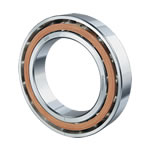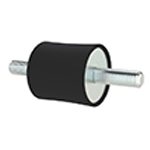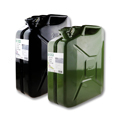Categories
Modern Warehouse
Four Point Contact Ball Bearings belong to the single row angular contact ball bearings family. But, unlike bearings of that series the four point contact bearings are double - acting. This means they are able to support thrust loads in either direction including minor radial loads. |
|
Four Point contact ball bearings are frequently used to accommodate thrust loads only. To avoid unforeseen radial loading to the bearing they used to be mounted with either reduced outside bearing ring diameters or to oversized housing seats. To prevent the outer ring from rotating with the shaft, four point contact ball bearing outer rings are often produced with locating slots. For this reason, NKE Four Point contact ball bearings with outer diameters of more than 160 mm dia are produced with two locating slots in their outer ring (suffix N2). Four point contact ball bearings are less suitable to operate with misalignments. When they are used in combination with a radial bearing as pure thrust bearings, however, they must not be exposed to any misalignment. Other tolerance classes, such as P6 or P5 are available upon request. Unless otherwise specified, NKE - four point contact ball bearings are fitted with machined solid brass cages (suffix MPA) as standard. Also, other cage types and materials are produced to order; Machined steel solid cage (Suffix F) machined light metal alloy solid cage (Suffix L) moulded Polyamide cage (Suffix TVP). NKE four point contact bearings are produced to axial clearance group CN (Normal) as standard.NKE also produce four point contact ball bearings with enlarged (axial clearance groups C3 or C4)and/or with reduced axial clearance (Clearance group C2) on request.Four point contact ball bearings are often used to accommodate thrust loads, so they do require optimum support of the bearing rings by the machine components surrounding the bearing. To gain adequate support the shaft and housing shoulders require a certain minimum height. The bearing rings, however, must only contact adjacent parts with their side faces. |







